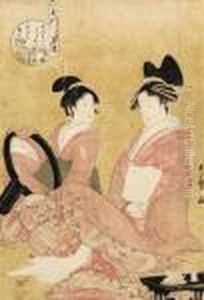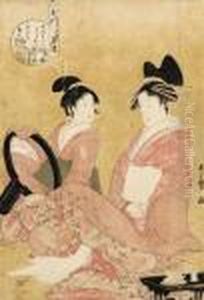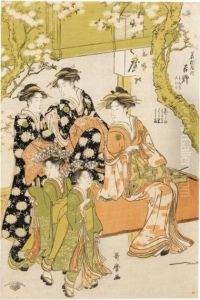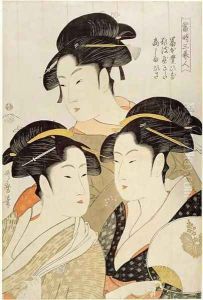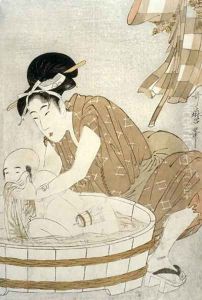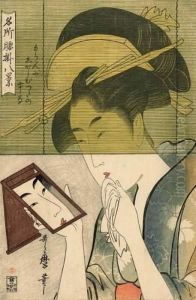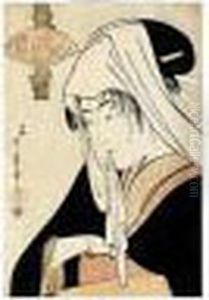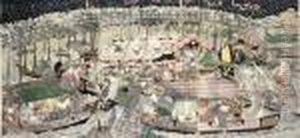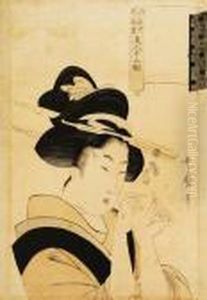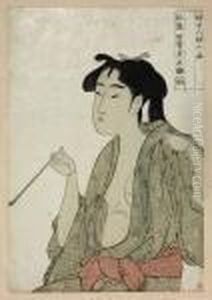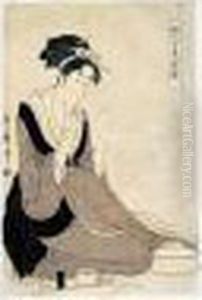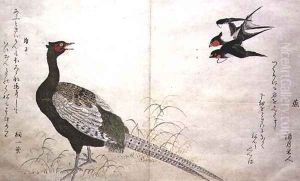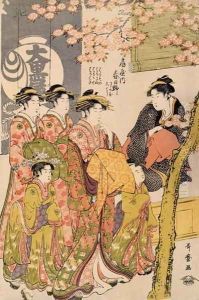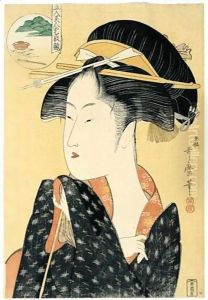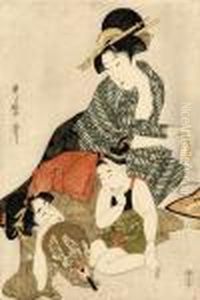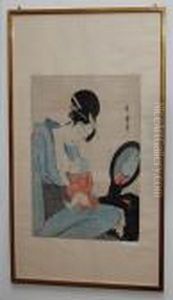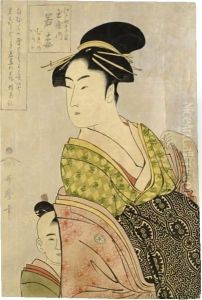





Wakaume Of The Tamaya In Edo-Cho Itchome, [Kamuro] Mumeno, Iroka
-
About Reproduction
Discover the allure of art with our faithful reproduction of "Wakaume Of The Tamaya In Edo-Cho Itchome, [Kamuro] Mumeno, Iroka", originally brought to life by the talented Kitagawa Utamaro. Unlike posters or prints, our hand-painted oil painting breathes an unique sense of depth and texture into your space. Every detail, every stroke, and every texture is meticulously recreated, paying the perfect homage to Kitagawa Utamaro and his artistic vision.
Owning this piece is more than just decoration - it's a statement of your refined taste in art. Let the vibrant colors and intricate details of this replica serve as a daily reminder of the beauty in our world. Elevate your decor and appreciate the richness of art with our replica of this masterpiece.
-
Painting Description
"Wakaume of the Tamaya in Edo-cho Itchome, [Kamuro] Mumeno, Iroka" is a renowned woodblock print by the celebrated Japanese artist Kitagawa Utamaro (c. 1753–1806). This work is part of Utamaro's extensive oeuvre of bijinga, or pictures of beautiful women, which often depicted the courtesans and geishas of the Yoshiwara district in Edo (modern-day Tokyo). Created during the Edo period, a time characterized by strict social orders and a flourishing urban culture, Utamaro's prints are celebrated for their elegant portrayal of female beauty and the subtleties of their expressions and postures.
The print features Wakaume, a courtesan from the Tamaya brothel, located in the first district of Edo. She is accompanied by her kamuro, young girls named Mumeno and Iroka, who are in training to become courtesans themselves. Kamuro typically assisted and attended to higher-ranking courtesans, learning the arts and customs of the pleasure quarters. In this particular piece, Utamaro showcases his mastery of line and color, as well as his ability to convey the intricate details of the subjects' clothing and hairstyles, which were significant indicators of status and fashion during the Edo period.
Utamaro's work is significant not only for its artistic merit but also for its documentary value, providing insights into the lives of women and the culture of the pleasure quarters during this historical period. "Wakaume of the Tamaya in Edo-cho Itchome, [Kamuro] Mumeno, Iroka" is a prime example of Utamaro's skill in capturing the essence of his subjects, making it an important piece in the study of ukiyo-e, a genre of Japanese art that flourished from the 17th through 19th centuries.
As a prominent figure in the world of ukiyo-e, Utamaro's influence extended beyond his lifetime, with his works continuing to be celebrated for their beauty and cultural significance. This print remains an important artifact of Japanese art history and is studied and admired by art enthusiasts and scholars alike.
-
Lead Time & Shipping
When you order this oil painting replica, it typically takes 2-3 weeks to paint. If the artwork is more complex, it might need a little more time to ensure the best quality. Once it's ready, we'll send you a photo for your approval. After you give the green light, we'll ship it to you for free.
-
Return & Refund
We believe in the quality of our hand-painted oil painting reproductions, and your satisfaction is our priority. If for any reason, you are not completely satisfied with your purchase, we offer a 45-day return policy. You can return your artwork within 45 days of receipt and receive a full refund. Please note that the artwork must be returned in the original packaging and in the same condition as it was received.
![Wakaume Of The Tamaya In Edo-Cho Itchome, [Kamuro] Mumeno, Iroka Oil Painting by Kitagawa Utamaro Wakaume Of The Tamaya In Edo-Cho Itchome, [Kamuro] Mumeno, Iroka Oil Painting by Kitagawa Utamaro](https://www.niceartgallery.com/imgs/331668/l/kitagawa-utamaro-wakaume-of-the-tamaya-in-edocho-itchome-kamuro-mumeno-iroka-fae99e04.jpg)




